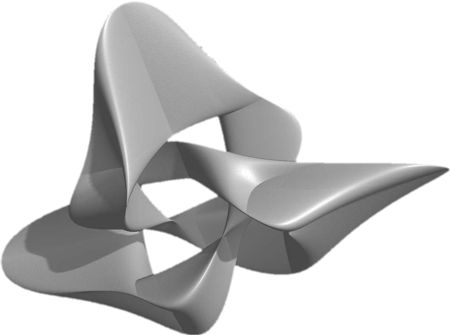
Soothing the Monkey Man: Psychological Safety as the Key to Expansive Learning
Scaffolding the Bridge
In teaching Numbers and Wonder: Rekindling the Spiritual Beauty of Mathematics, I’ve come to see that the biggest barriers to learning aren’t always intellectual, they are often deeply emotional and instinctual. This insight has been shaped by the work done across SiriusLeigh.com, and specifically in courses like The Trigger Guard and the Inner Fractal series, where we emphasize that readiness to learn isn’t just a cognitive process; it’s about gaining the trust and cooperation of the Monkey Man.
The Monkey Man is that ancient, protective part of us, the primal layer of the psyche that learned, early on, how to respond to situations perceived as threatening or humiliating. For many people, math was introduced during formative years in ways that triggered anxiety, shame, or a sense of inadequacy. The Monkey Man took notes. He decided long ago: “Math is risky. Better to avoid it, or stick to the safest path: memorize the answer, don’t venture into the unknown.”
While we might now approach math with a mature mind, this inner guardian of familiarity still operates in the background, enforcing old protective strategies.
This is why psychological safety and the courage to learnWhy It Matters for Abstract Study The concept of psychological safety, first introduced by organizational scholar Amy Edmondson, refers to More is so crucial – not just as an abstract ideal, but as a direct invitation to the Monkey Man to stand down and watch as new experiences unfold. Even when a student’s conscious mind is eager to engage, their inner protector may stay on high alert, ready to pull them back at the first sign of struggle. Without addressing this inner dynamic, no amount of intellectual encouragement will fully open the door to transformative learning.
In the prerequisite course, The Trigger Guard, we emphasize points of readiness. As students explore recursive patterns, fractal logic, and deeper connections between math and spirituality, they are not just building knowledge; they are retraining their entire inner system to approach the unfamiliar with curiosity rather than fear. These small, manageable steps that reassure the Monkey Man that it is safe to explore, question, and risk “getting it wrong.”
We make it clear that safety isn’t a one-time message; it’s a repeated demonstration of trustworthiness. The same principles carry over into Numbers and Wonder, where every lesson is designed not only to teach mathematical concepts but also to edify and soothe the inner protector.
For example, when we explore the Fibonacci sequence, infinity, or the connections between Pascal’s Triangle and Gaussian mathematics, we are not just offering new knowledge. We are carefully creating a scaffold where students experience success early and often, gently proving to their Monkey Man that this new experience of math is different free of judgment, full of curiosity, and deeply respectful of their inner landscape.
The work of Inner Archetype Series takes these insights even further, showing us that true growth requires not just intellectual agility but emotional integration. As we step into higher dimensions of thought; engaging with fractal logic, recursive patterns, and the deeper mathematics of reality we ask students to grow knowledge purposefully, often without the safety net of fixed answers. This kind of expansive learning cannot succeed if the Monkey Man is left behind, still wary and defensive.
This is why psychological safety is not just a nice-to-have; it’s the cornerstone of transformative learning. By repeatedly offering a space where mistakes are reframed as progress, and where questions are treated as treasures rather than liabilities, we invite both the conscious mind and the primal protector to move forward together.
My greatest hope is that Numbers and Wonder provides the kind of nurturing, trust-building experience that allows students to not only reclaim their relationship with math but to prepare for the large mental strides that await them in more advanced courses. We are not simply teaching mathematics; we are initiating a process of inner reconciliation, uniting mind, spirit, and instinct so that the full self can engage with the infinite mysteries of the universe.
When both the thinker and the Monkey Man feel safe, the real magic of learning begins.
the Three Cons of Conscious Behavior—Conditional, Conditioning, and Congenital—and how understanding them has transformed the way I…
There are patterns behind your patterns.Shapes within your thoughts.Voices within your voice. This is the realm of…


